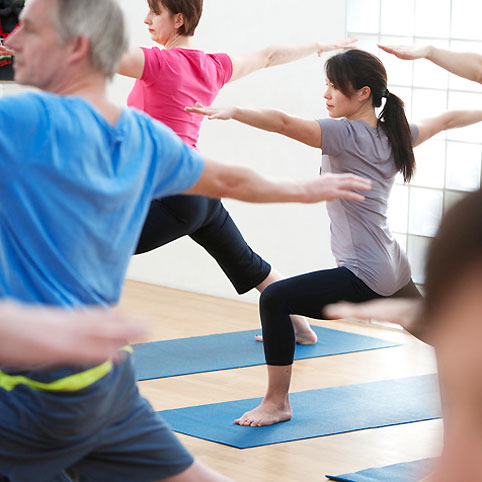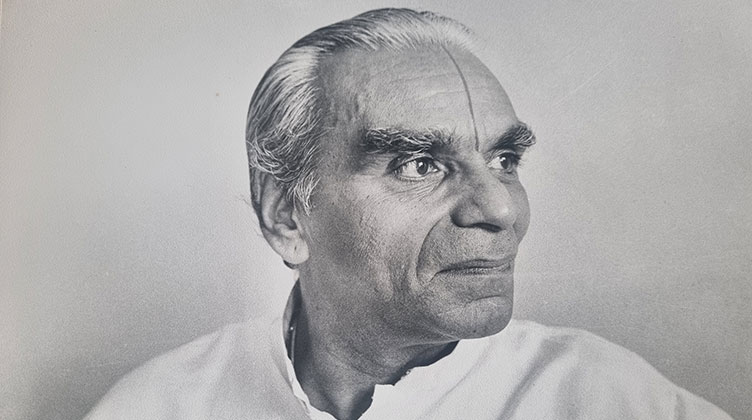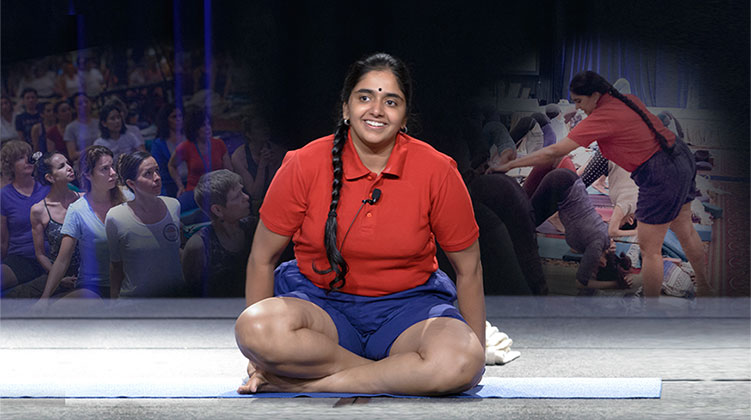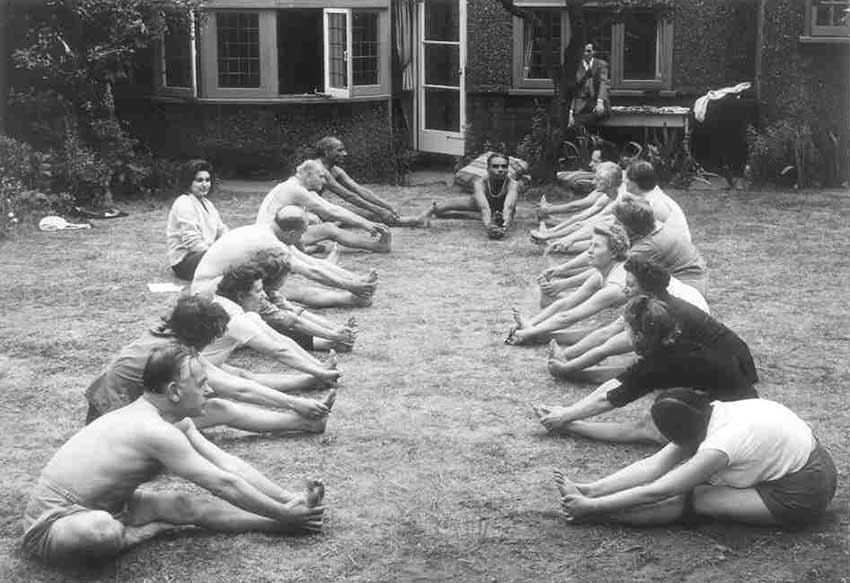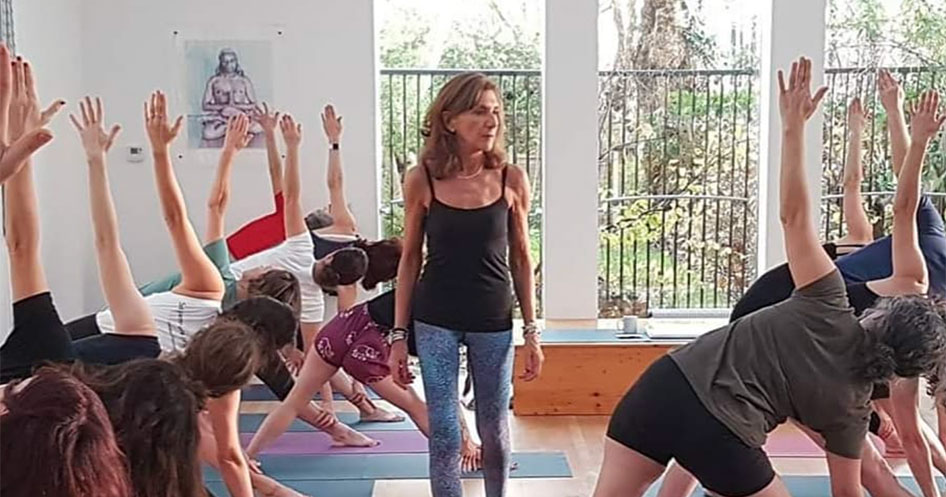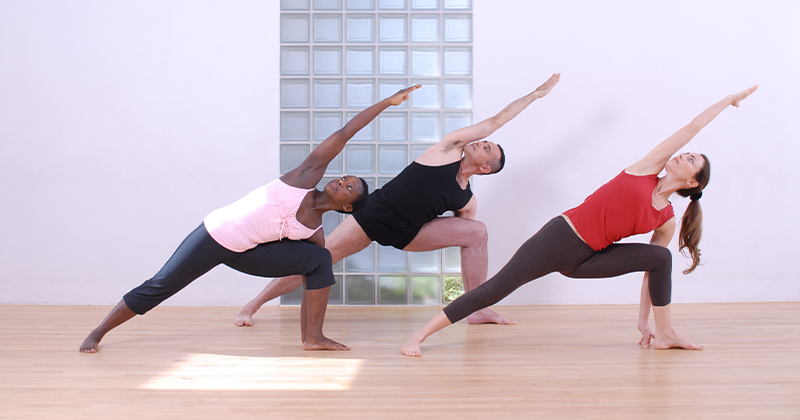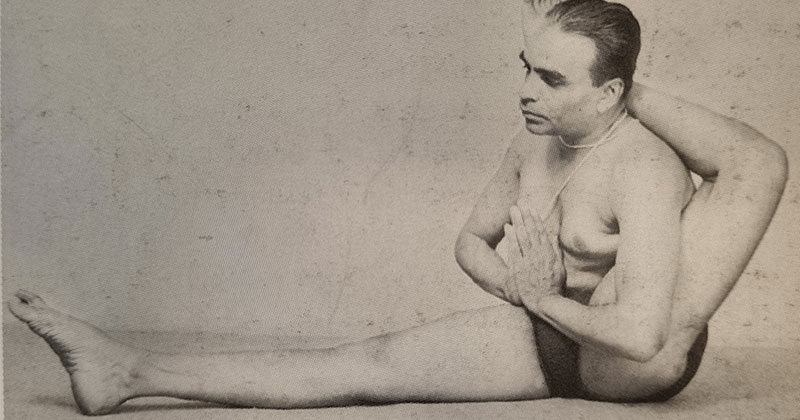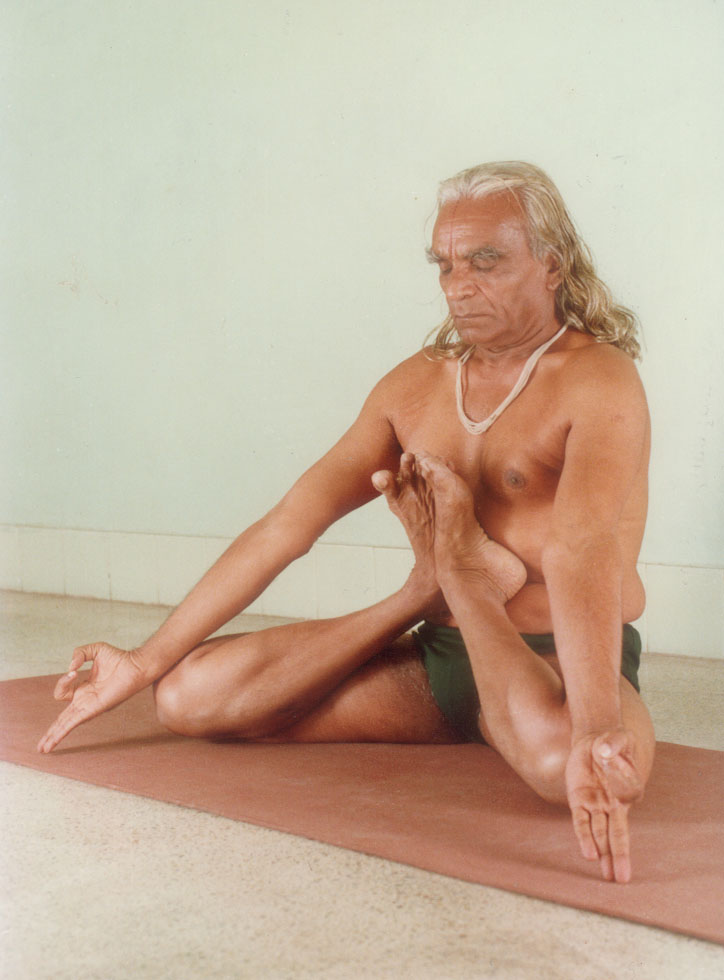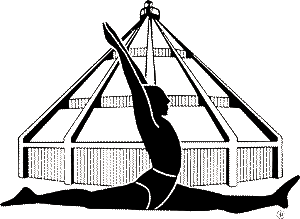
BKS Iyengar on yoga practice and ageing
At 92 years of age BKS Iyengar continued to practise yoga for several hours each day. Here he describes how his practice changed with age and offers advice to students on yoga in later life.
You may have no problems at all up to the age of fifty or sixty. After that, the real problem arises when the tissues of the body do not bear the load. What I practise now is more difficult than what I did when I was young or struggled to learn. Though today, I don’t consider those practices as very hard although I practised ten hours a day then. Today, it is a big fight between the body and the mind. The body says, “I can’t do it.” The mind says, “Do not force me.”
Will over matter
Believe me, after a certain age, to practise asana and pranayma is going to be very hard. I am doing it because of this reason only. The body ages. It descends towards deterioration. The rate of catabolism increases more than anabolism. The bones become brittle. The blood vessels get hardened. All these are known facts. I do not want to fall prey to these. If I surrender to the will of the body, then I am no more a yogic practitioner. When I practise, I watch how to stop this deteriorating process. That is the will over matter.
Then you say, “Iyengar doesn’t need anything because he has practised earlier”. But that is not the right way of thinking. In fact, I see how at this age I need to practise. I have to avoid the constriction of the sternum. I have to see how the diaphragm remains free. If I look at the possible deteriorations and maintain my practice of asana, then people say that I am a physical yogi.
“I see in each asana, the perfect freshness and firmness of body, the alert, steadiness of intelligence and the sweet, benevolence of the self.”
Increased timings
Often people think that at the old age they should do dhyana (meditation) or japa (repetition of mantras) instead of asana and pranayama practice. I am not that type of a sadhaka (practioner) to take shelter under the garb of old age. I will not run away from my practice because of the fear complex of old age. I do meditation in each asana as in each asana I see God who is infinite and beyond measure. Because of age I have increased timings in my practices. Mind and body want to give way. I daily charge my body and mind to stand with will power so that I do not surrender to the weakness of my body and mind.
Having a good background of philosophy, practising yoga, I now continue life without depending on anyone. I have to stick to the philosophy of the body as I am already ingrained in the spiritual knowledge.
The steadiness of intelligence
The only difference between now and the early days is that in the early days I was like all other youngsters. I was tempted to do the asana one after the other. Today, I stay in Dwi Pada Viparita Dandasana or in Kapotasana for quite a length of time. At this age I clearly understand the sutra (Yoga Sutras, II.46), sthira (stable, firm) sukham (sweet, easy) asanam (posture) in its total sense. Now, I see in each asana, the perfect freshness and firmness of body, the alert, steadiness of intelligence and the sweet, benevolence of the self. I see whether I can enjoy sthira and sukha in a long stay in Kapotasana. Can I be sthira and sukha in Dwi Pada Viparita Dandasanaa
Sometimes I do ten minutes Parsva sirsasana, on each side. These are difficult asanas. Nobody does the advanced or complicated asana at this age. Nobody takes the risk of doing and staying in these asana as it requires courage. To do and maintain an asana when the muscles and nerves tremor and the loose joints shake, heart beats faster, it is not an easy thing. I am not that type of a person to sit in Padmasana and say, “I am comfortable.” If you are doing yoga, you realise the difficulties as one ages. So, my advice to all of you is that as yoga frees one from the afflictions of actions, afflictions come in chains in old age. Therefore maintain and sustain what you have learnt and do to keep it up then.
Courage and faith
This needs not only will power but also courage and faith. By the proper chemistry of will power and courage along with discrimination, the yogic practices generate the energy in the nerve cells as you stay in those difficult asanas for a long time with comfort. At this age I learn lots of things. It is the wisdom that comes at this age. I have not lost this freshness of intelligence.
When you do Parsva sirsasana, sometimes you may not know where the legs are, where the shoulders are, where the load is. For an aging person like me, it is more difficult to have the sensitivity; yet, I have not lost it. Every now and then I come back to the right position in case I deviate from my limbs or mind. I educate the cells that they have to remain where I want them. I try for sthira sukham asanam in these difficult asanas. It is easy to be sthira and have sukham in the simple asana.
I regularly practise pranayama and dhyana in Padmasana. You do not see me early in the mornings to know what I do. You only see me practising asana in the hall, but my approach is the same in pranayama, dharana and dhyana. To be honest, this is ethics.
Tatah klesha karma nivrttih (YogaSutras, IV.30). With the end of afflicted oriented actions, see that the afflictions do not enter the system or you in old age.
Dipika, 2011
Blog categories
Become a member
Join our community to get reduced class prices, early booking for events and workshops plus access to the studio for self practice.
Recent news and articles
2024 Convention – Group Livestream Event
7 March 2024|
The First Public Iyengar Yoga Class in the UK
22 November 2023|
NEW Hybrid Classes
5 September 2023|
7 Day Visitor’s Pass
26 June 2023|
Geeta Iyengar on Why We Practise Difficult Asanas
26 June 2023|
